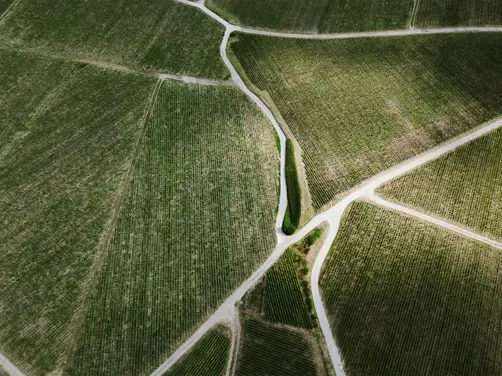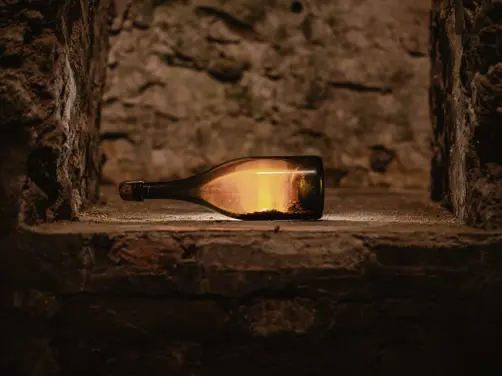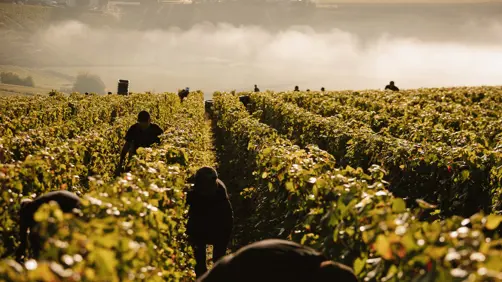The Magic of Dom Pérignon
Dom Pérignon strives for the perfect balance of Chardonnay and Pinot Noir – it is the paradox of opposite and complementary elements of these grape varieties that creates vibration and tension.

After harvesting, it takes eight years in the cellar before Dom Pérignon reaches its first Plénitude. This slow maturation is the price to be paid to make it such a complex and harmonious wine.

Call me a wine snob but to me, nothing is sillier than seeing people pop Dom Pérignon and spray it around as if it were air freshener. The deluxe blasphemy continues as they sip the holy juice at a frosty 5°C from flutes, which totally over accentuate its acidity. Or pair it with strawberries, the most unsuitable food to go with champagne ever. Why spend top dollar on a stellar wine only to suppress its greatness by amateurish handling?
That would be like driving a Ferrari 812 Competizione with the handbrake on – you cannot unfold its true glory, power and brilliance, lying at the heart of its very existence. A total waste of magic. But that is just my personal opinion and you need to decide for yourself what makes you happy.
I think many would enjoy champagne more if they knew how complicated, time-consuming and deeply refined the production of Dom Pérignon is. What it takes to achieve this ever-striking harmony of house style and vintage character, of Chardonnay and Pinot Noir, of history and vision. To cut through time and space by balancing craftmanship with poetry. Where do I start? By opening a bottle.
I am browsing through my humble collection, contemplating which vintage to crack open. 2015? Too vegetal for me. 2013? So ethereal and electric, but still a tad too young. 2012? Nicely bold and rich; my fiancée prefers elegant vintages. 2010? Not a fan, sorry. 2006? A personal favourite but not a typical Dom. 2002? Out of this world and saving it for a special occasion. 2008? Yes! This legendary vintage is hailed as the GOAT and adored for its superior balance of elegance and power. Let’s see how it tastes at sweet 16.

ʻDom Pérignon’s aesthetic ideal is a never-ending quest for harmony: the perfect balance of precision, intensity and complexity along with the sensations of ripeness, vibrancy and lightness.ʼ – Vincent Chapéron, Cellar Master

Pop, pour, sniff. Say hello to that smoky toasty, sea-breezy hallmark perfume of Dom Pérignon. In the mouth, it is delicate yet energetic, with laser-like precision. Aromas of fresh apple, juicy nectarine, dried flowers and citrus brioche emerge, a whiff of nuts and oyster shells, all smoothly woven together and firing on the palate with a super yeasty chalky minerality. Still a baby, but you can feel the power underneath, waiting to erupt in the next decades. I pour myself a big sip, seal it with a bottle stopper and put it back in the fridge, so it can gently breathe for an hour. Like every fine wine, it needs time to open up.
My mind wanders back to the late 17th century, when monk Dom Pierre Pérignon, and everybody else in Champagne, produced still red wine. Fermentation was halted by cold winters and in spring, yeasts woke up to further ferment and form bubbles. This made bottles explode and gave champagne its charming nickname, Devil’s Wine, so the abbey tasked him to improve the wines first and foremost by eliminating the unholy bubbles. You guessed it: he didn’t succeed. But along the way, he worked out new techniques such as slow pressing (for clearer wines) and blending different vineyards (for more complex wines), forming champagne’s DNA as we know it today. No wonder he is considered its spiritual godfather.
It wasn’t until 1936 that the first champagne under his name was commercially released. Dom Pérignon 1921 paved the way for the category of Prestige Cuvée (created by Louis Roederer’s Cristal 60 years earlier and adapted by all major maisons) but that iconic heraldic label slowly became established as a mark of success and a guarantee of magic.
The legend was further elevated by the launch of Dom Pérignon Rosé with the 1959 vintage, served at the 2,500-year celebration of the Persian Empire in 1971… by the serving of the 1961 vintage at the wedding of Charles and Diana in 1981… by its countless special editions by the likes of Lady Gaga, Jeff Koons or Lenny Kravitz.
It is time to take out my bottle of 2008 from the fridge, bring it up to 8°C and pour it into tulip-shaped champagne glasses, so the wine can fully express itself. Wow, this tastes more intense than an hour ago, and will pair beautifully with my freshly cooked spaghetti alle vongole. I just love pairing Dom Pérignon with pasta and seafood – the flour emulates its yeastiness and the sea accentuates its slightly salted elegance, reminding me of the Côte d’Azur.
To me, that is the real magic of Dom Pérignon, to enjoy it in peace and pair it with fine food. To others, the magic is to pop and spray, or to show off with it. However it is enjoyed, it elevates a moment into an outstanding one, whether you are a wine snob or not. I find Dom Pérignon to be always complex but not complicated, and I think, therein lies the success of the world’s most popular vintage-only Prestige Cuvée. It is always a fine wine that is harmonious, smooth and so effortlessly easy to sip, it makes you forget the world around you. By the way, how come this bottle is already empty? Well, that is the magic of Dom Pérignon.
Words Dan Roznov






